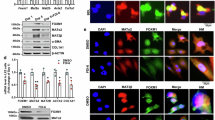Abstract
FOR some years my research has been concerned with the invasive stages of Fasciola hepatica in mammalian hosts. Young flukes have been tracked through the intestinal wall, the abdominal cavity and the hepatic parenchyma, and adults have been studied in the bile duct. Much evidence has shown that the flukes can break down many soft tissues which they encounter and has indicated that the fluke is, at all stages, a tissue feeding animal and not a blood feeder, as is commonly supposed. When I infected mice experimentally, dead flukes were not seen, although my investigations of X-irradiated flukes1 have shown that flukes weakened in this way may be killed by phagocytosis. Band-type neutrophil leucocytes (polymorphs) penetrate the cuticle, spread throughout the cuticular core, and raise the epicuticle in blister-like formations which break down, leaving a stripped cuticle in a dying fluke. However, the leucocytes do not penetrate the base of the cuticle (lamina vitrea) and the disintegration of dead flukes is by secondary phagocytosis, so that this process differs from that reported by Standen2 for drug-treated schistosomes. Standen has suggested that phagocytosis and drug action are related processes in schistosomes, and the possibility that this is so seemed to be worthy of investigation in liver flukes. However, my aim in a recent investigation has been to study any histological effects on the organs of F. hepatica when the rat hosts are treated with a drug.
This is a preview of subscription content, access via your institution
Access options
Subscribe to this journal
Receive 51 print issues and online access
$199.00 per year
only $3.90 per issue
Buy this article
- Purchase on SpringerLink
- Instant access to full article PDF
Prices may be subject to local taxes which are calculated during checkout
Similar content being viewed by others
References
Dawes, B., Parasitology, 54, 369 (1964).
Standen, O. D., in Bilharziasis, 266 (J. and A. Churchill, 1962).
Yokogawa, M., in Adv. Parasitol., edit. by Dawes, B., 3, 99 (Academic Press Inc., 1965).
Dawes, B., and Hughes, D. K., in Adv. Parasitol., edit. by Dawes, B., 2, 97 (Academic Press Inc., 1964).
Dawes, B., Parasitology, 53, 123 (1963).
Author information
Authors and Affiliations
Rights and permissions
About this article
Cite this article
DAWES, B. Some Apparent Effects of Bithionol (‘Actamer’) on Fasciola hepatica. Nature 209, 424–425 (1966). https://doi.org/10.1038/209424a0
Issue date:
DOI: https://doi.org/10.1038/209424a0
This article is cited by
-
Fasciola hepatica: time-dependent disruption of spermatogenesis following in vivo treatment with triclabendazole
Parasitology Research (2011)
-
Fasciola hepatica: disruption of spermatogenesis by the fasciolicide compound alpha
Parasitology Research (2010)



